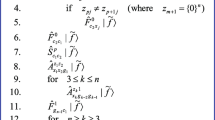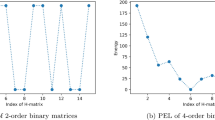Abstract
A fast quantum algorithm for a search and pattern recognition in a Hilbert space memory structure is proposed. All the memory information is mapped onto a unitary operator acting upon a quantum state which represents a piece of information to be retrieved. As a result of only one quantum measurement, the address of the required information encoded in a number of the corresponding row of the unitary matrix is determined. By combining direct and dot products, the dimensionality of the memory space can be made exponentially large, using only linear resources. However, since the preprocessing, i.e., mapping the memory information into a Hilbert space can appear to be exponentially expensive, the proposed algorithm will be effective for NASA applications when the preprocessing is implemented on the ground, while the memory search is performed on remote objects.
Similar content being viewed by others
References
Grover, L. K. (1996). A fast quantum mechanical algorithm for database search. I. Proceedings of the 23rd Annual ACM Symposium on the Theory of Computing ACM, New York, pp. 212-219.
Shor, P. (1997). Polynomial-time algorithms for prime factorization and discrete logarithms on a quantum computer. SIAM Journal of Computation, 26 (5), 1473-1483.
Author information
Authors and Affiliations
Rights and permissions
About this article
Cite this article
Zak, M. Quantum Algorithms in Hilbert Database. International Journal of Theoretical Physics 42, 2061–2068 (2003). https://doi.org/10.1023/A:1027339220458
Issue Date:
DOI: https://doi.org/10.1023/A:1027339220458




